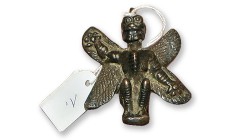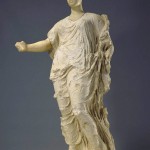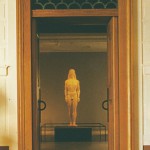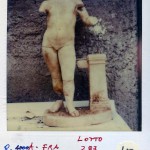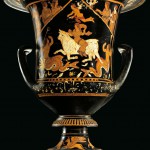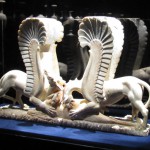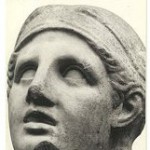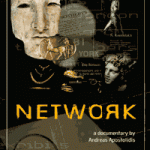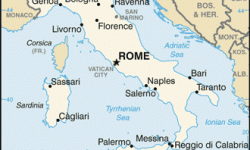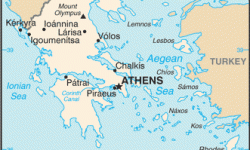Marion True
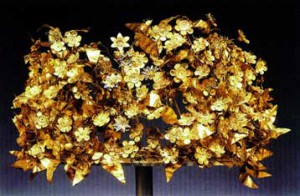
Marion True was Curator of Antiquities at the J.Paul Getty Museum in Los Angeles from 1986 until 2005. She was charged and tried in both Italy and Greece on offences related to antiquities smuggling, but never convicted.
Marion True was appointed curatorial assistant at the J. Paul Getty Museum in 1982, under the supervision of Jiri Frel, the then Curator of Antiquities. After Frel’s departure in 1986, True was promoted to replace him as curator (Felch and Frammolino 2011: 77-8).
During the period of her curatorship, True was responsible for some controversial acquisitions of unprovenanced material, including the 1988 purchase of the Getty Aphrodite, the 1993 purchase of a fourth-century BC gold funerary wreath from Greece, and the 1996 acquisition of the Barbara and Lawrence Fleischman Collection. She also rejected some potentially high-profile assemblages, including the Kanakaria mosaics in 1988, which she recognized as stolen (Felch and Frammolino 2011: 115-17), and the Sevso Treasure, when she discovered that the accompanying documents of provenance were probably forgeries (True 1997: 140). She was prepared to return material to its country of origin if it was shown convincingly to have an illicit provenance, including several hundred ceramic fragments acquired by donation between 1979 and 1981, that in 1994 were found to have been looted from a sanctuary at Francavilla Maritima in Italy (Lyons 2010: 422-5; True 1997: 143).
True was the driving force behind the Getty’s adoption of clear policy guidelines as regards its acquisition of unprovenanced antiquities. The first version, in 1987, which was believed at the time by True to be the only policy of its kind in place at a major collecting museum, required the Getty to notify in writing the appropriate authority of a possible country of origin about a potential acquisition, and request information about theft or illegal export. The acquisition would only proceed if no such information was forthcoming. Furthermore, if at any time after acquisition a country could make a verifiable claim of theft or illegal export, the Getty would return the object in question, notwithstanding any legal protection offered by a statute of limitations (True 1997: 138). This policy was strengthened in November 1995 by the assurance that an unprovenanced object would only be acquired if it had been published or otherwise publicly documented as out of its country of origin prior to November 1995 (True 1997: 138). This requirement for public documentation was intended to protect against forged provenances, which True believed were rife in the antiquities trade (Kaufman 1996). Several pieces were returned in accordance with the policy (Lee 1999). Nevertheless, the sincerity of the Getty’s motives was called into question by the 1996 acquisition of the Fleischman Collection, comprising largely unprovenanced material, which had been published only in 1994 by the Getty itself.
True was offered the position of Curator of Greek and Roman Art at the Metropolitan Museum in New York in 1991 after Dietrich von Bothmer’s retirement the year before, but declined the offer when she was presented with the opportunity to oversee the projected renovation and redesign of the Getty Villa in Malibu, which was to house the Getty’s antiquities collection (Eakin 2007). The project cost $275 million and the Villa reopened in January 2006 (Felch and Frammolino 2011: 273-7). True suggested that the 1995 revision of the acquisitions policy was part of a larger change in mission occasioned by this reimagining of the Getty Villa, which envisaged a shift in primary purpose for the museum from collecting antiquities to conservation abroad and incoming loan exhibitions (Somers Cocks 1995: 6).
In 1995, True bought a house on the Greek island of Paros with the help of a four-year loan of $400,000 from Christos Michaelides, partner of antiquities dealer Robin Symes, from whom the Getty had bought several important pieces, including the Aphrodite (Felch and Frammolino 2011: 135-8; Watson and Todeschini 2007: 288-9). Just days after the acquisition of the Fleischman Collection in 1996, she paid back Michaelides with money borrowed from the Fleischmans on a twenty-year mortgage (Felch and Frammolino 2011: 146). When these loans came to the attention of the Getty trustees in September 2005, True was fired for failing to declare them in contravention of the Getty’s conflict-of-interest policy (Felch and Frammolino 2011: 266). On 1 April 2005, a few months before her dismissal, True was charged in Italy with receiving stolen antiquities and conspiring with dealers Robert Hecht and Giacomo Medici to receive stolen antiquities, and she was ordered to stand trial in Rome (Felch and Frammolino 2011: 259; Wilkinson and Muchnic 2005). The case against True had materialized as Italian investigators working through photographic and documentary material seized from Medici’s Geneva storerooms began to suspect her involvement. It was quickly recognized that True had acquired a fifth-century BC bronze tripod and candelabrum for the Getty in 1990 that had been stolen from the long established Guglielmo Collection in Italy (Felch and Frammolino 2011: 153-4). Letters were also discovered revealing what appeared to be friendly relations between True, Medici and Hecht (Felch and Frammolino 2011: 212-13; Watson and Todeschini 2007: 85, 98). Finally, there was a set of photographs recording forty-two objects that had passed through the hands of Medici before ultimately being acquired by the Getty (Felch and Frammolino 2011: 197; Watson and Todeschini 2007: 87). The investigators also came to believe that prior to 1996 True had been encouraging the Fleischmans to buy objects of dubious provenance in the knowledge that they would ultimately be donated to the Getty—in effect, using the Fleischman Collection to launder potentially illicit material (Felch and Frammolino 2011: 257-9).
True argued in her defence that staying on good terms with antiquities dealers was a professional requirement of her position as curator (True 2011), that she had not acquired objects for her own benefit, but for the museum, and that she should not take sole responsibility for acquisitions made during her tenure as curator, as they had all been made with the approval of the Getty CEO (Harold Williams until the end of 1997, Barry Munitz until 2006), Director (John Walsh until September 2000, Deborah Gribbon until 2004), in-house counsel, and Board of Trustees (Eakin 2010). This statement was supported by internal Getty documentation (Felch and Frammolino 2011: 218). Indeed, many of the objects in the photographs seized at Medici’s storerooms had been acquired before True was curator (Felch and Frammolino 2011: 198, 248). Both True and Barbara Fleischman rejected out of hand any imputation of collusion (Felch and Frammolino 2011: 254-5). The trial commenced on 16 November 2005, and was abandoned without verdict on 13 October 2010 as the limitation period on True’s alleged offences expired (Eakin 2010; Felch and Frammolino 2011: 312). True complained that she had been ‘neither condemned nor vindicated’ (True 2011).
In November 2006, Greek prosecutors charged True in connection with the fourth-century BC gold funerary wreath acquired in 1993, which was by then believed to have been taken out of Greece illegally (Felch and Frammolino 2011: 290; Zirganos 2007: 320). In November 2007, her trial was ended without resolution after the expiry of the statute of limitations (Felch 2007; Felch and Frammolino 2011: 306) .
References
Eakin, Hugh (2007), ‘Treasure hunt. The downfall of the Getty curator Marion True’, New Yorker, 17 December. http://www.newyorker.com/reporting/2007/12/17/071217fa_fact_eakin, accessed 18 July 2012.
Eakin, Hugh (2010), ‘Marion True on her trial and ordeal’, New Yorker, 14 October. http://www.newyorker.com/online/blogs/newsdesk/2010/10/marion-true.html, accessed 18 July 2012.
Felch, Jason (2007), ‘Charges are dropped in Getty case’, Los Angeles Times, 28 November. http://articles.latimes.com/2007/nov/28/entertainment/et-getty28, accessed 18 July 2012.
Felch, Jason and Frammolino, Ralph (2011), Chasing Aphrodite: The Hunt for Antiquities at the World’s Richest Museum (New York: Houghton Mifflin Harcourt).
Kaufman, Jason Edward (1996), ‘Getty decides publishing equals provenance’, Art Newspaper, (61), 17.
Lee, Donald (1999), ‘Getty returns three stolen works’, Art Newspaper, (90), 1,3.
Lyons, Claire (2010), ‘Museums as sites of reconciliation’, in James A.R. Nafziger and Ann M. Nicgorski (eds.), Cultural Heritage Issues: The Legacy of Conquest, Colonization, and Commerce (Leiden: Martinus Nijhoff), 421-432.
Somers Cocks, Anna (1995), ‘The Getty retreats from the antiquities market’, Art Newspaper, (54), 1, 16.
True, Marion (1997), ‘Refining policy to promote partnership’, Antichità Senza Provenienza II (Bolletino d’Arte; Rome: Ministero per i Beni e le Attività Culturali), 137-46.
True, Marion (2011), ‘Neither condemned nor vindicated’, Art Newspaper, (220). http://www.theartnewspaper.com/articles/Neither-condemned-nor-vindicated/22163, accessed 18 July 2012.
Watson, Peter and Todeschini, Cecilia (2007), The Medici Conspiracy (New York: PublicAffairs).
Wilkinson, Tracy and Muchnic, Suzanne (2005), ‘Indictment targets Getty’s acquisitions’, Los Angeles Times, 20 May. http://articles.latimes.com/2005/may/20/entertainment/et-getty20, accessed 19 July 2012.
Zirganos, Nikolas (2007), ‘Operation Eclipse’, in Peter Watson and Cecilia Todeschini, The Medici Conspiracy (New York: PublicAffairs).
